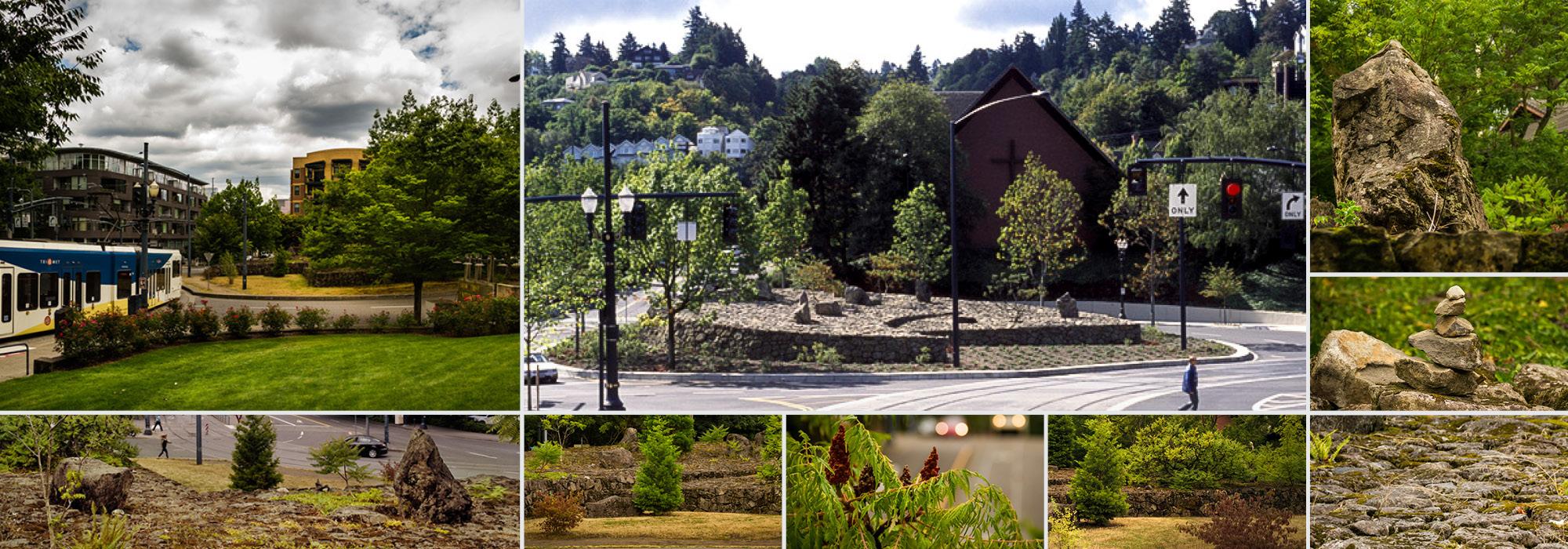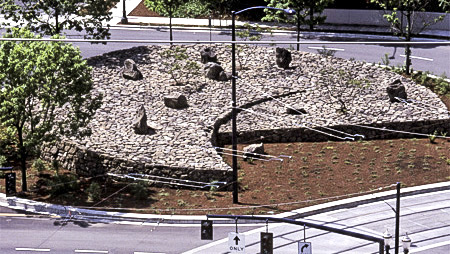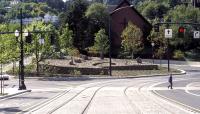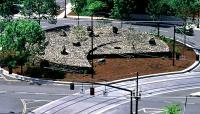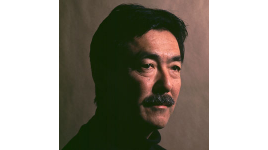Serving as a gateway to Portland, this permanent sculptural public art installation is one of three prominent light rail stations designed in 1997 by landscape architect Robert Murase. Framing significant vistas, Murase’s concept for the transit corridor met the practical considerations of light rail infrastructure and enhanced the commuter experience through the integration of art.
Expressing the past, present, and future, Collins Circle was inspired by the sacred symbol for infinity used in Japanese brush painting. Situated at the convergence of three streets and the light rail station, the site-specific installation is entirely enclosed in a traffic circle and functions as both a transit hub and place for reflection. Evoking Oregon’s volcanic geology, the landscape is comprised of a 160-foot diameter circle of basalt stones surrounded by oaks. The circular form is interrupted on one side with a straight cut. Fractured and roughly-hewn boulders, now speckled with lichen, are interlocked to form a gradually elevated ground plane. Punctuated with upright, basalt slabs, and native sumacs and ferns, the installation tilts upward from the roadway to eventually reach a height of four feet. As a sculpture, the installation is intended for passive observation rather than active engagement.



